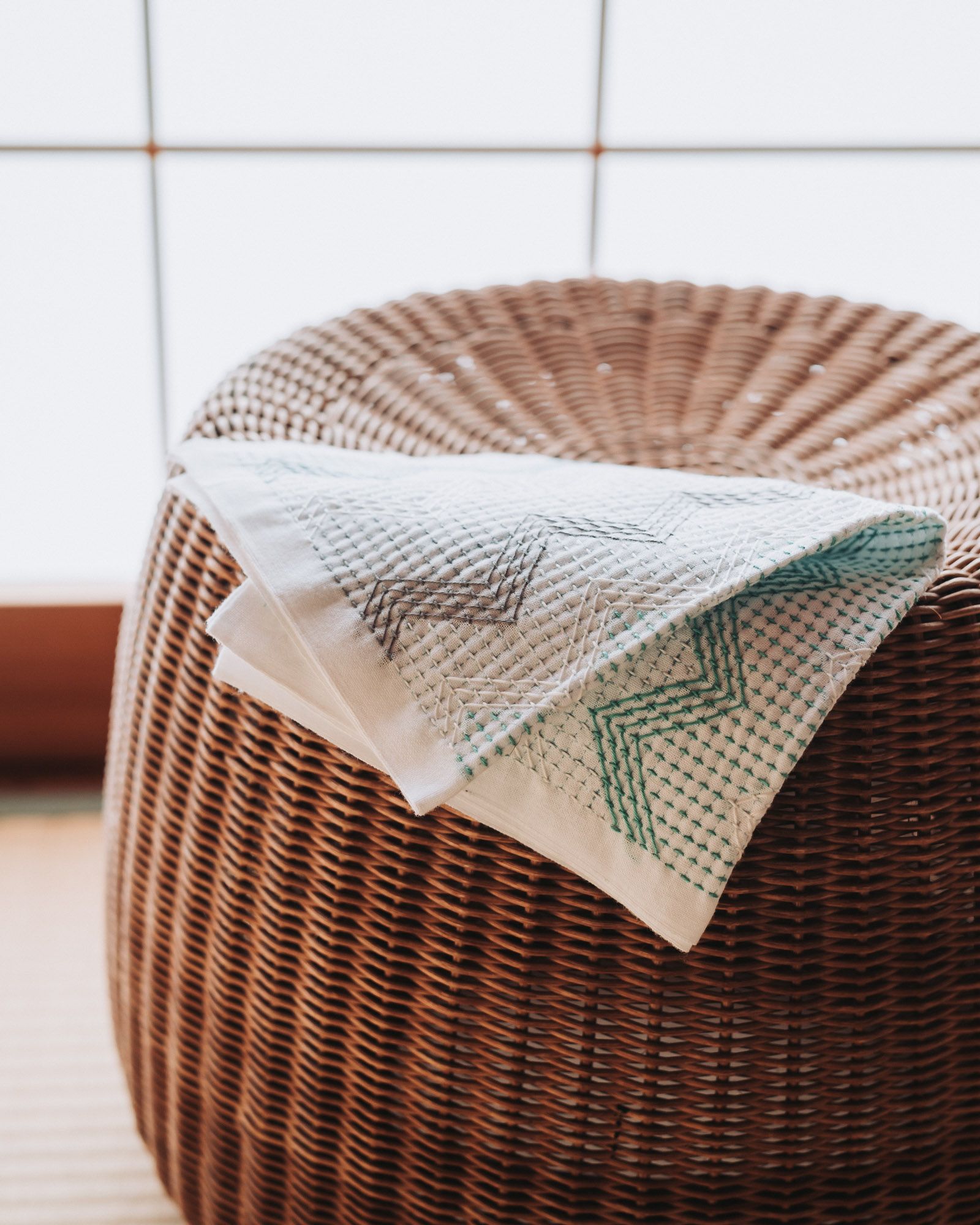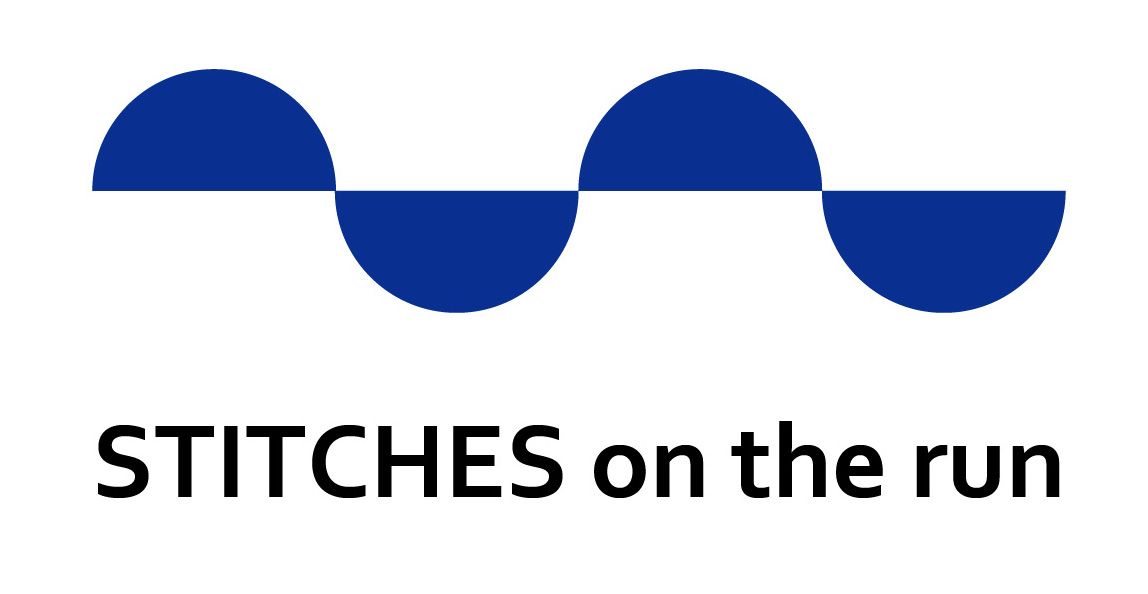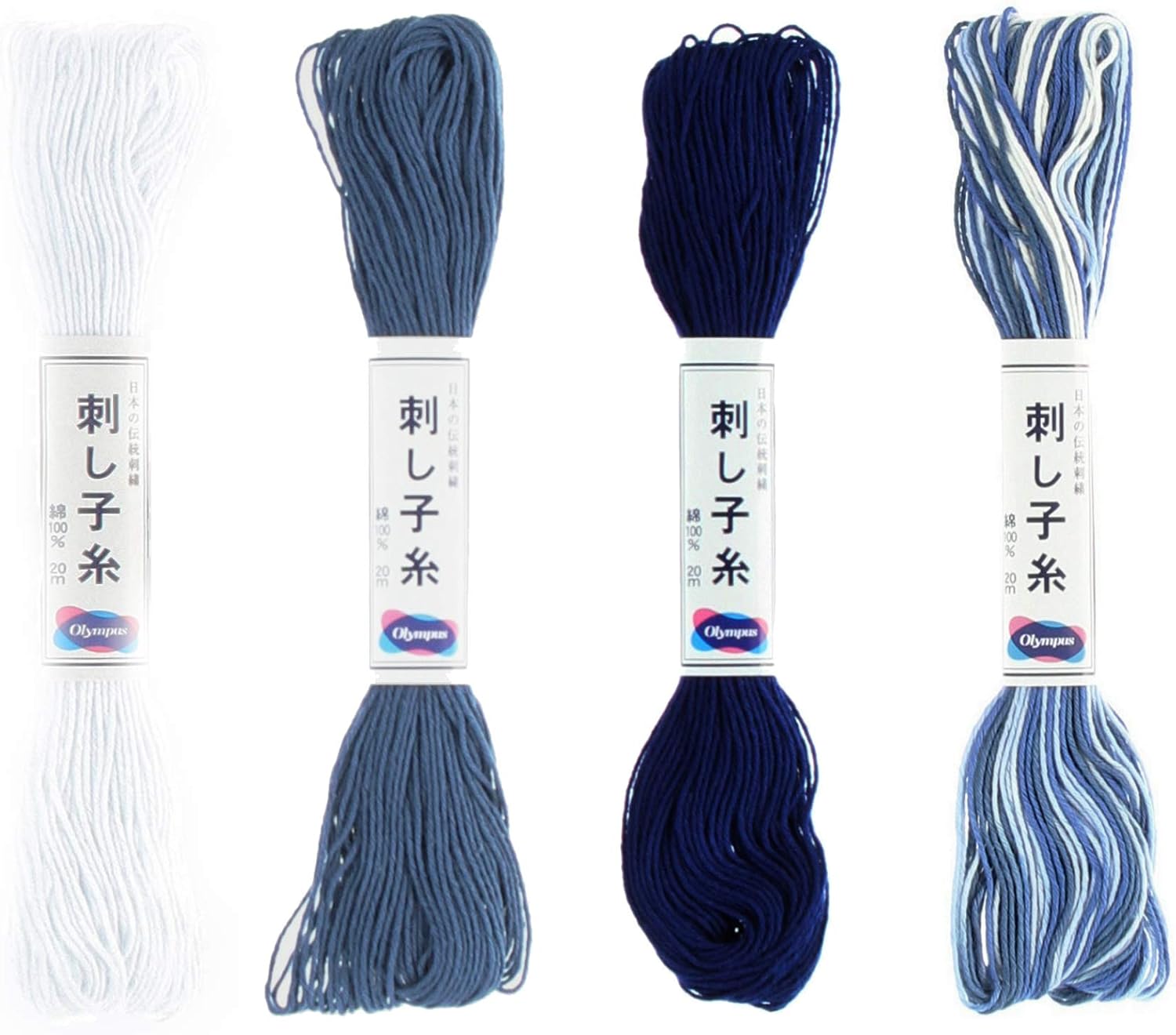The best thread for mending your denim jeans
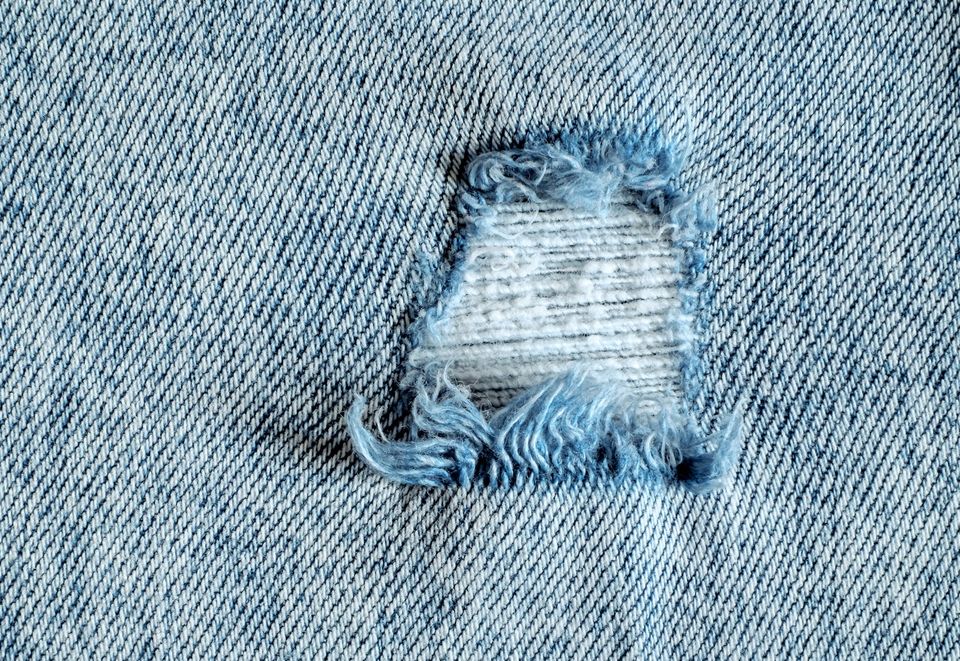
If you love your denims as much as I love mine, they may have developed a hole or two over the years. Of course, that is no reason for letting go of them. Instead, use this as an excuse to give your pair of jeans a little facelift with the help of a needle and some thread.
Stitches on the Run is reader-supported. When you buy through links on my site, I may earn an affiliate commission. It doesn't cost you anything extra but it helps keep my blog and my stitches running. Thanks!

If you want to make sure that your healing stitches will outlast the next season, you should use sashiko thread to mend your jeans.
Other threads may look just as pretty but they may not be as comfortable. Even worse, they may not be as durable. And while repeatedly mending a hole that develops, again and again, makes for a very unique piece of custom clothing, you probably don't want to keep repairing your jeans every other season.
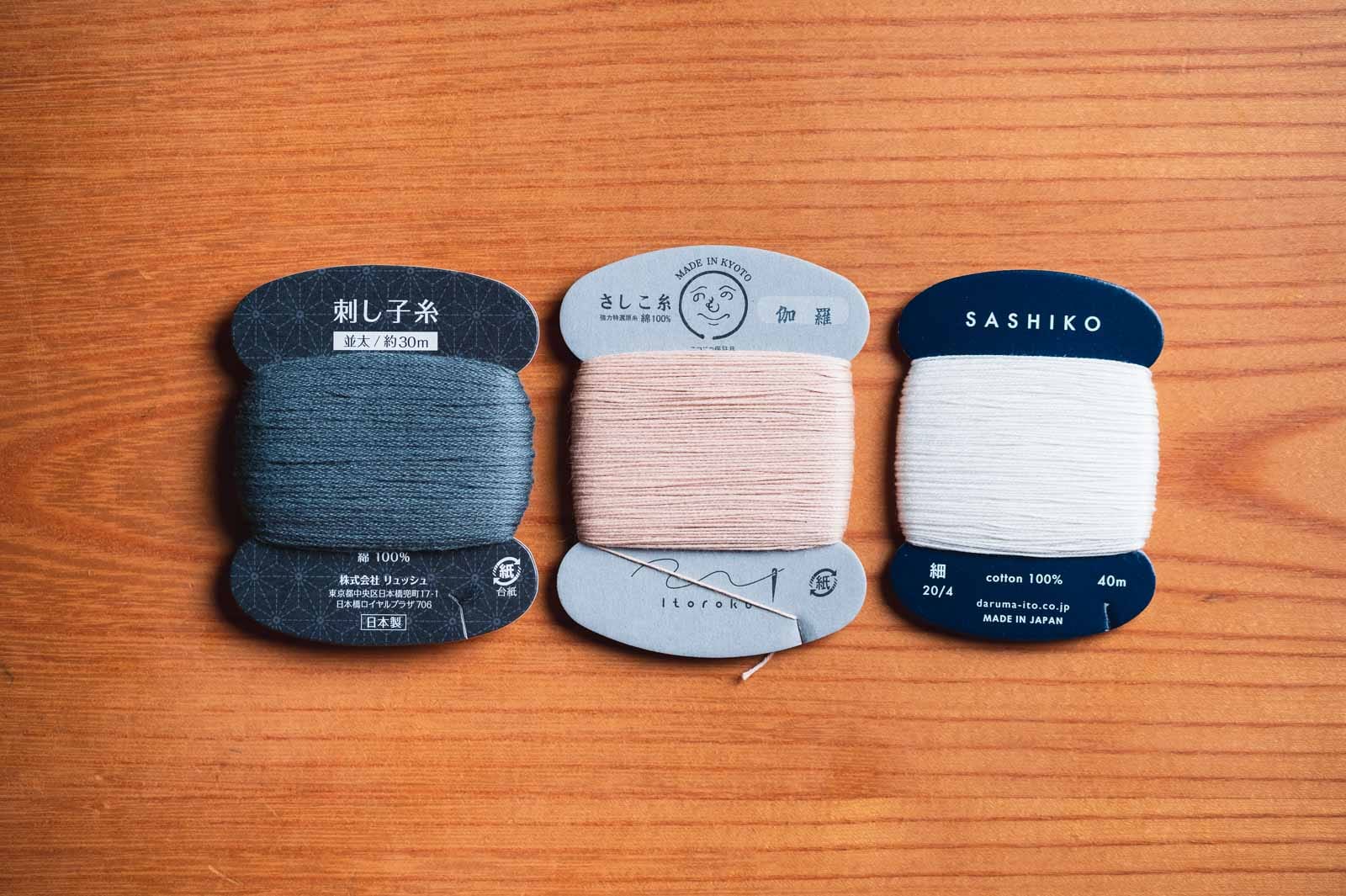
Which thread is the most durable?
The most durable sashiko thread is kogin thread. But you shouldn't choose your thread just for its durability.
While it makes sense that you would want your mended jeans to last as long as possible, don't forget that all sashiko thread is made to be very durable, not only the most durable one.
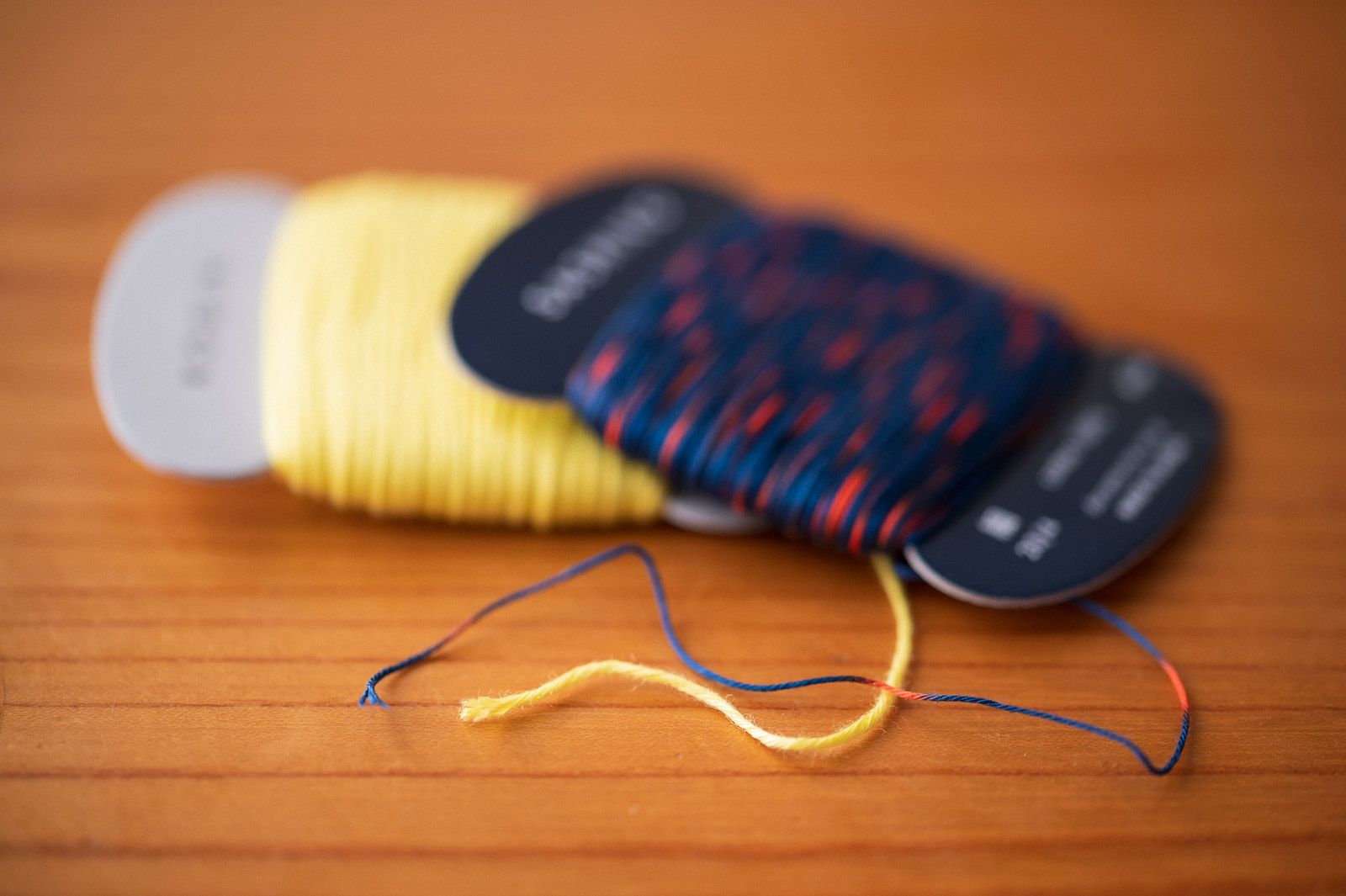
You should try to avoid cheap quality thread, but unless you use cheap vintage thread, most sashiko thread will do. If you want to be on the safe side, go for thicker sashiko thread.
But even thin sashiko thread will be durable enough and considering denim fabric's tight weave, in many cases thin sashiko thread may be the better option. It's quite hard to force Kogin thread through a typical denim weave.
Which thread is the most comfortable?
Especially if you're mending the knees or crotch of your jeans, you may wonder which thread you should use for the greatest comfort. Luckily, I have yet to find sashiko thread that is uncomfortable in any way.
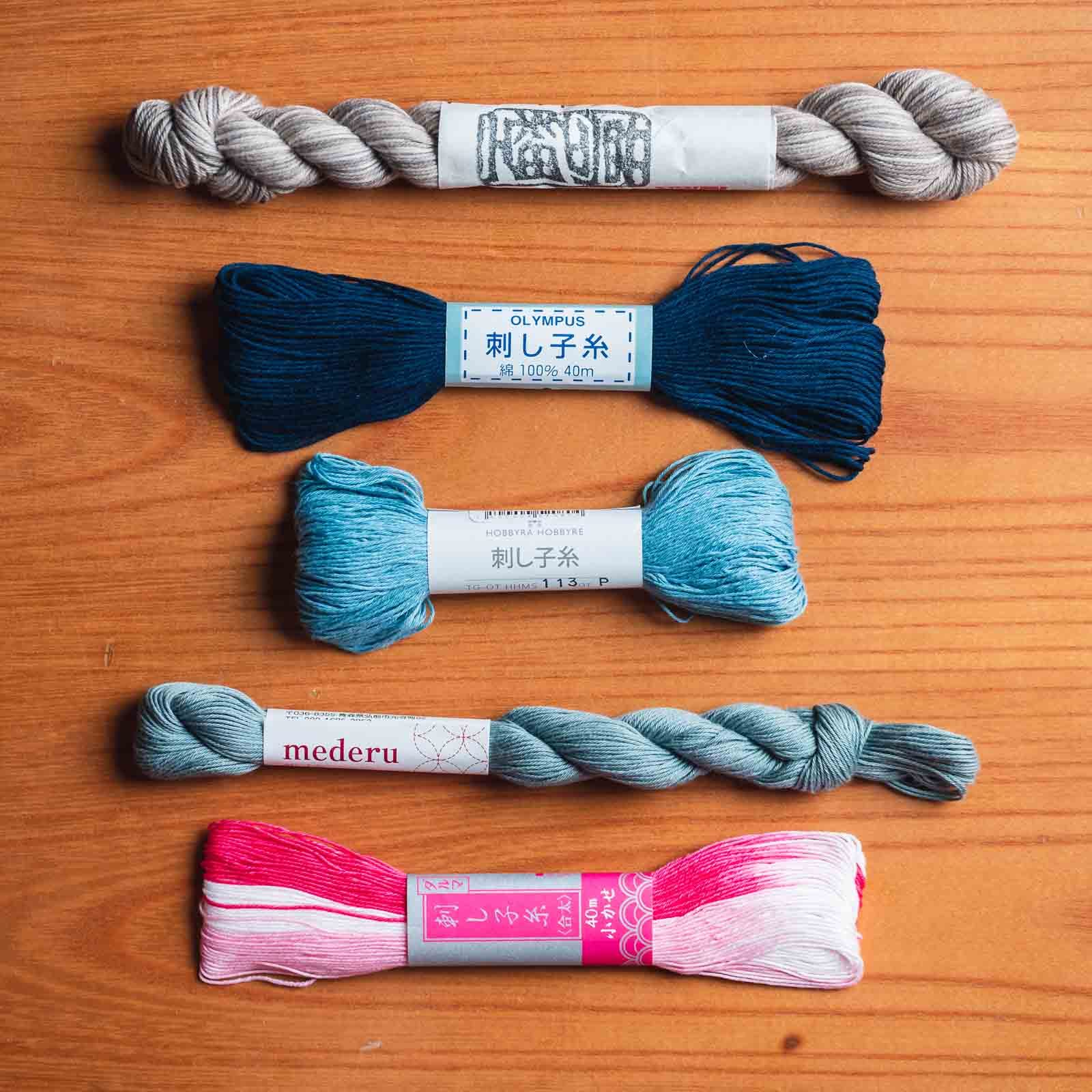
All sashiko threads are developed to be durable and soft, so they eventually become one with the fabric. Thanks to its softness, sashiko thread doesn't scratch or itch.
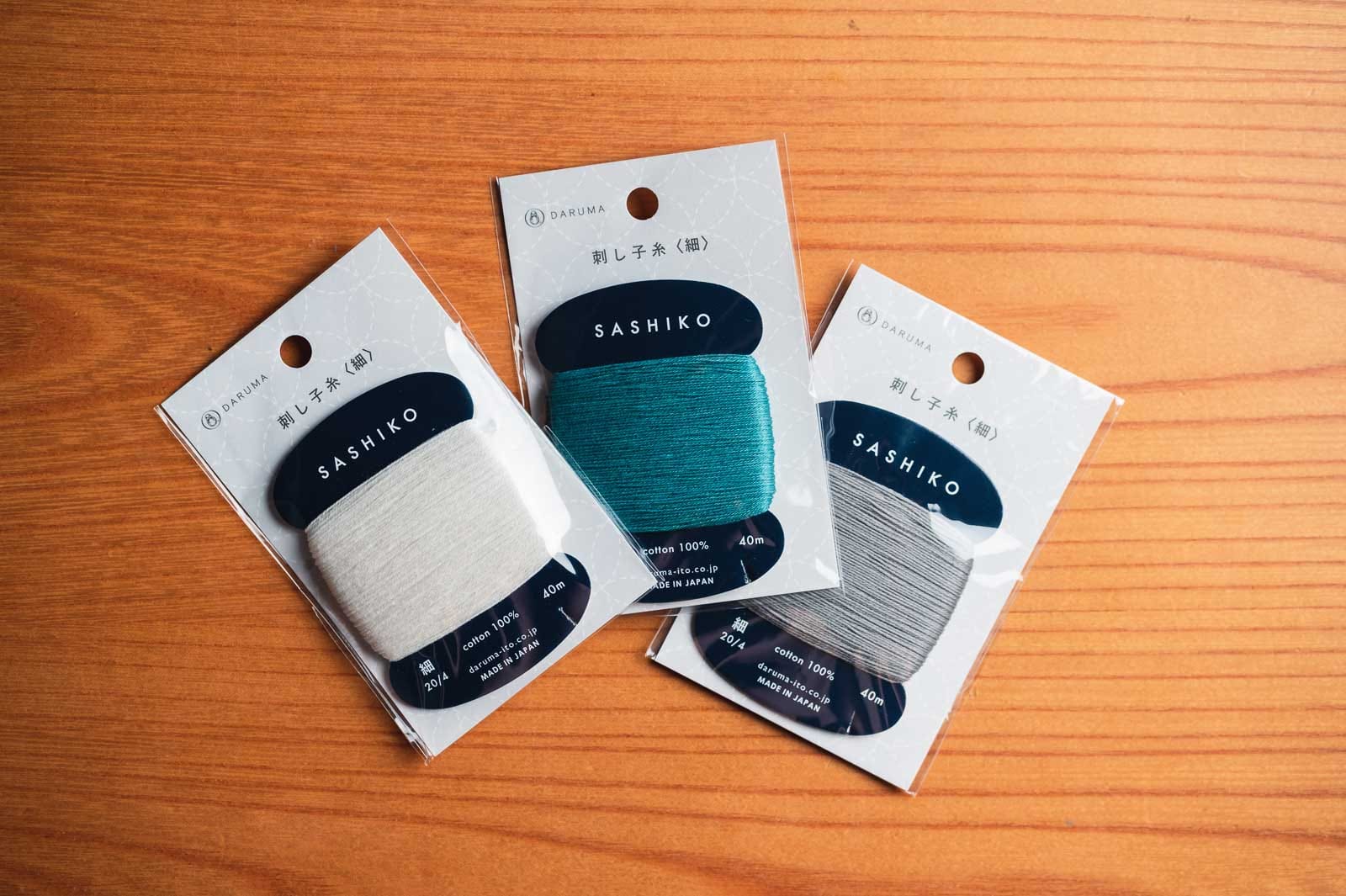
I am a big fan of Daruma thread (this link goes out to the Daruma homepage, but at the moment they don't ship to any locations outside of Japan) and if you compare it to other brands' thread, you can see that it is a little bit fluffier. So maybe that makes it the most comfortable? But I doubt that your knees or thighs would be able to feel a difference between the various brands. Mine certainly don't.
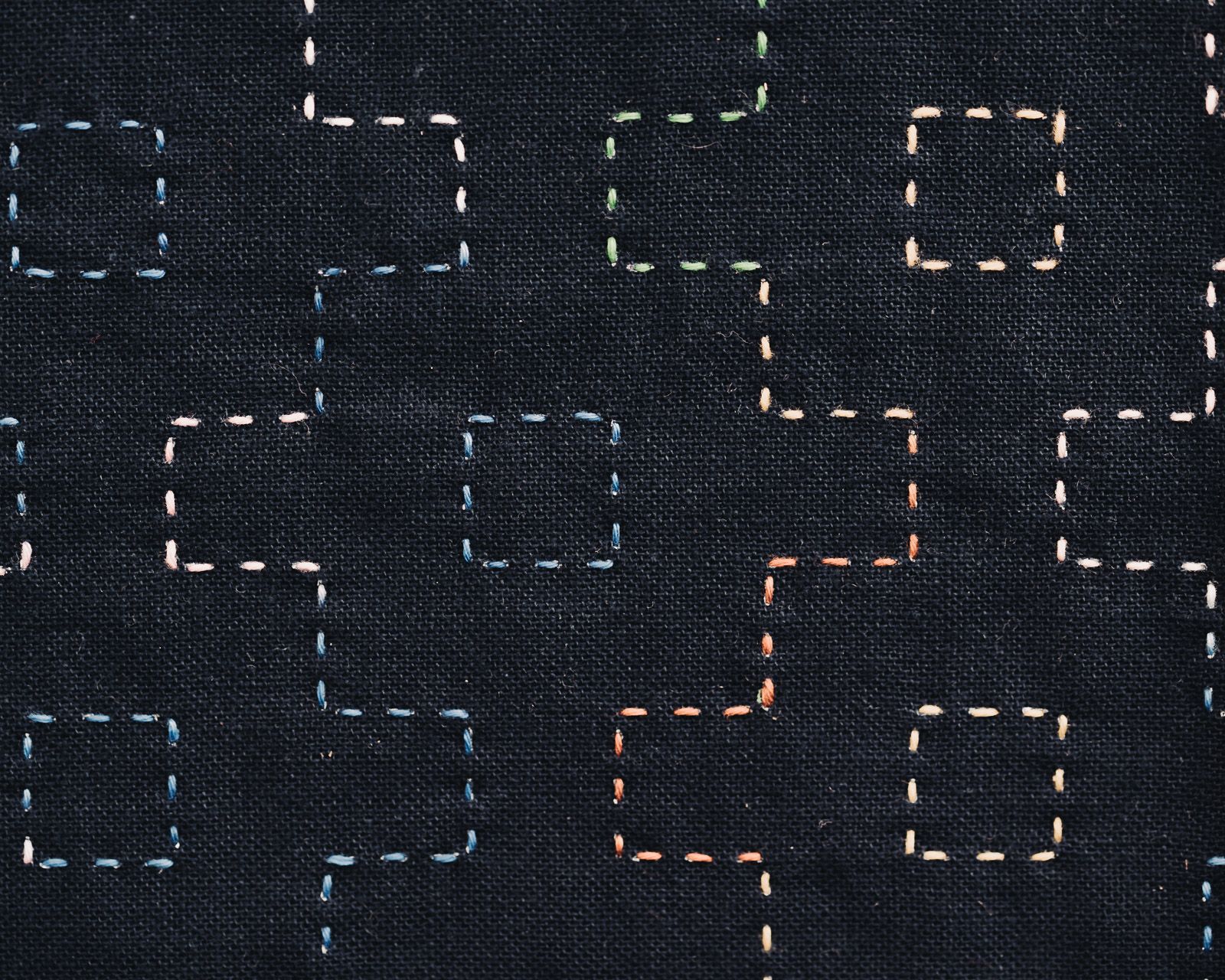
Follow this link to find more interesting information on sashiko thread.
Which color should you use?
Well, this depends on your taste. If you want your design to stand out, there is no reason why you shouldn't choose a vivid color that contrasts with the color of your denims. Naturally dyed thread will fade faster than chemically dyed one, meaning that the look will change over time.
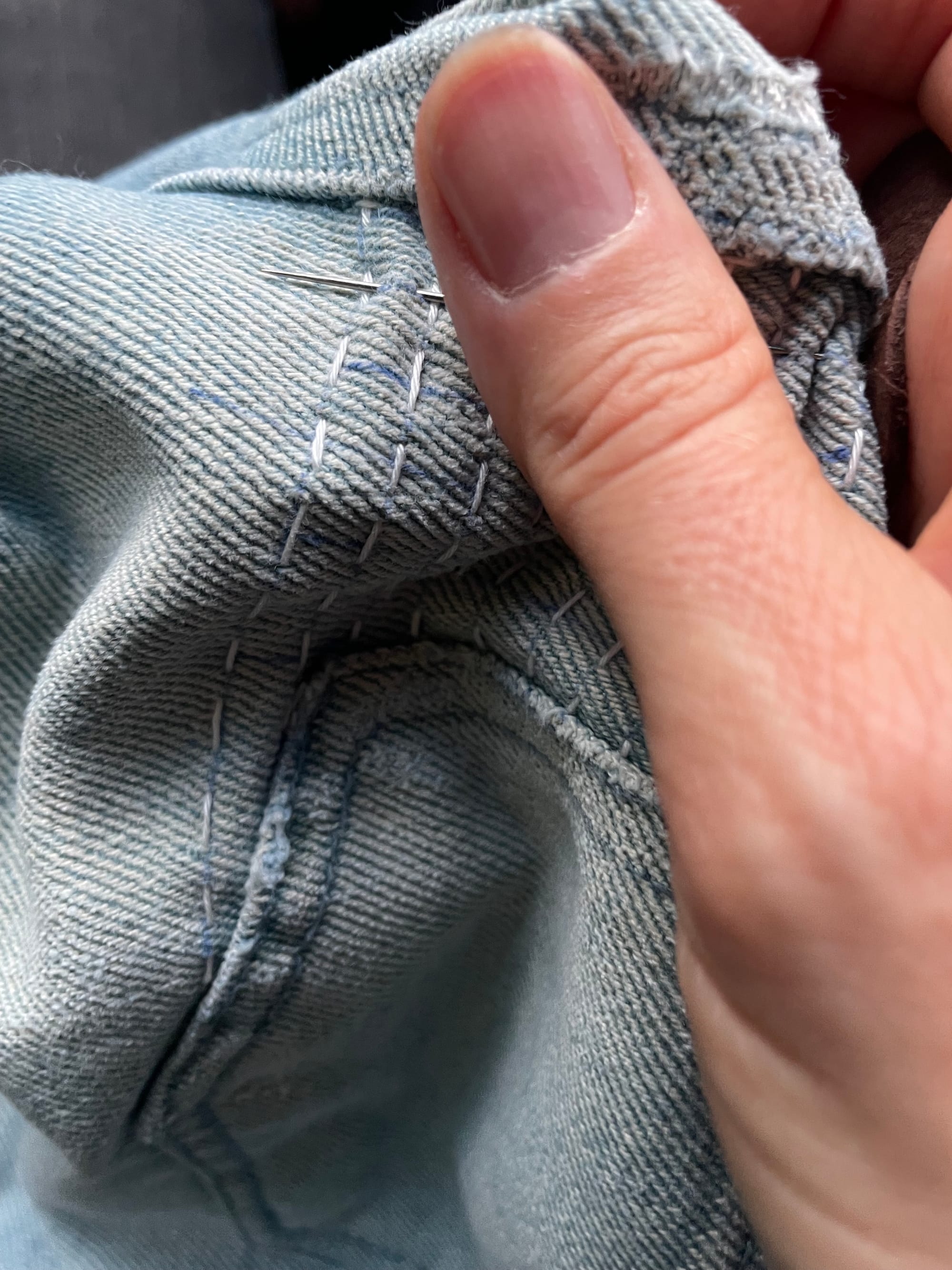
If you prefer a subtle look, you can choose a color that matches the jeans' color or only varies slightly. Blue denim fabric is traditionally dyed with indigo, so using indigo thread should give you the most natural subtle look.
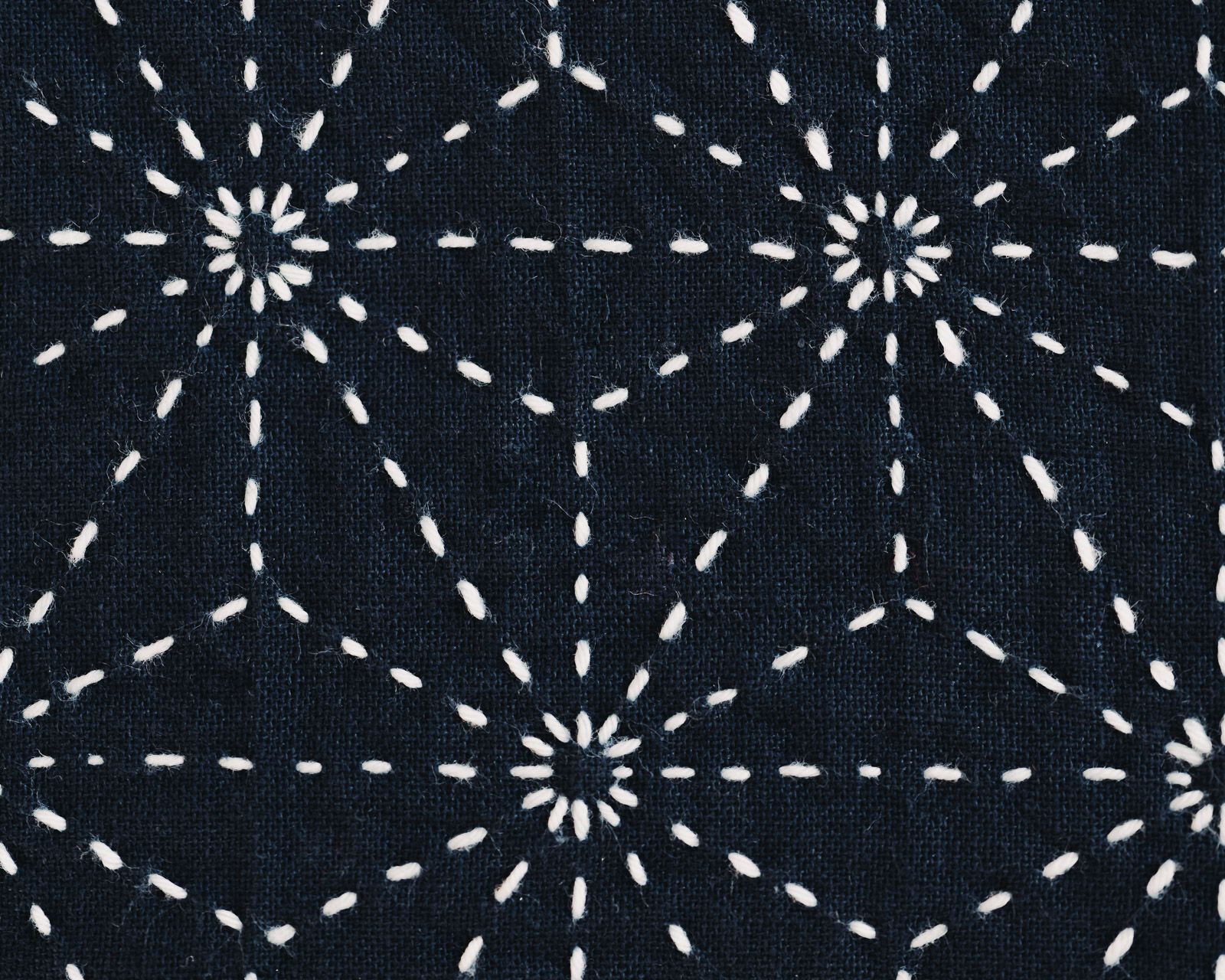
Don't forget that there is also variegated thread should you want to mix colors up.
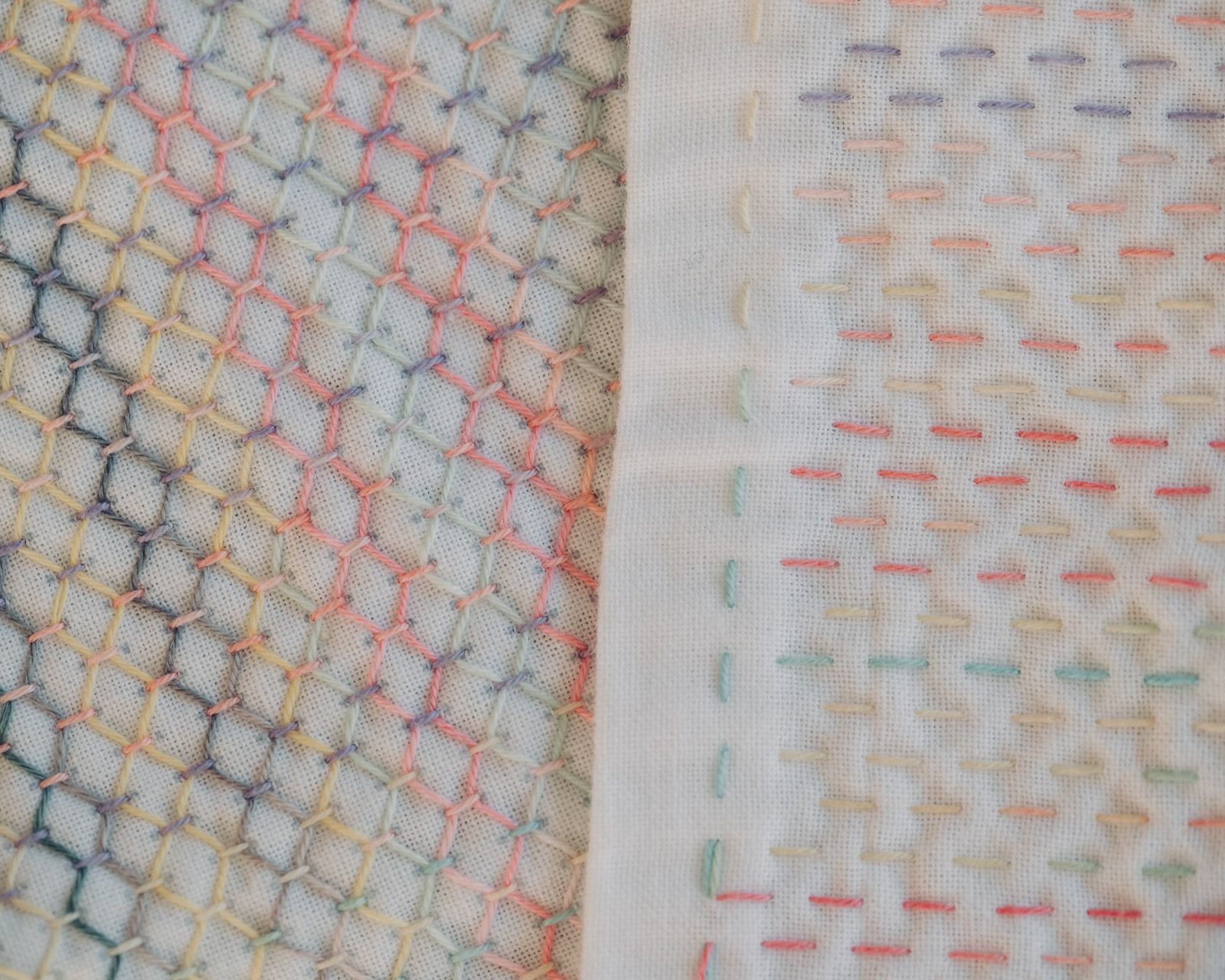
In case you can't make up your mind, you can always try different colors on the inside of the waistband and just leave the stitches there. Unless you pierce through the fabric out the other side, no one will see the stitches. Only you will know they are there. A little hidden magic all to yourself.
FAQ
Which pattern is best for mending jeans?
If you are new to sashiko and just want a recommendation so you can start: I love the simplicity of 十字刺子 jūjisashiko. Literally, it means "letter 10 sashiko". It looks like many tiny plus signs in a row. It is extremely easy to stitch, fast, and durable.
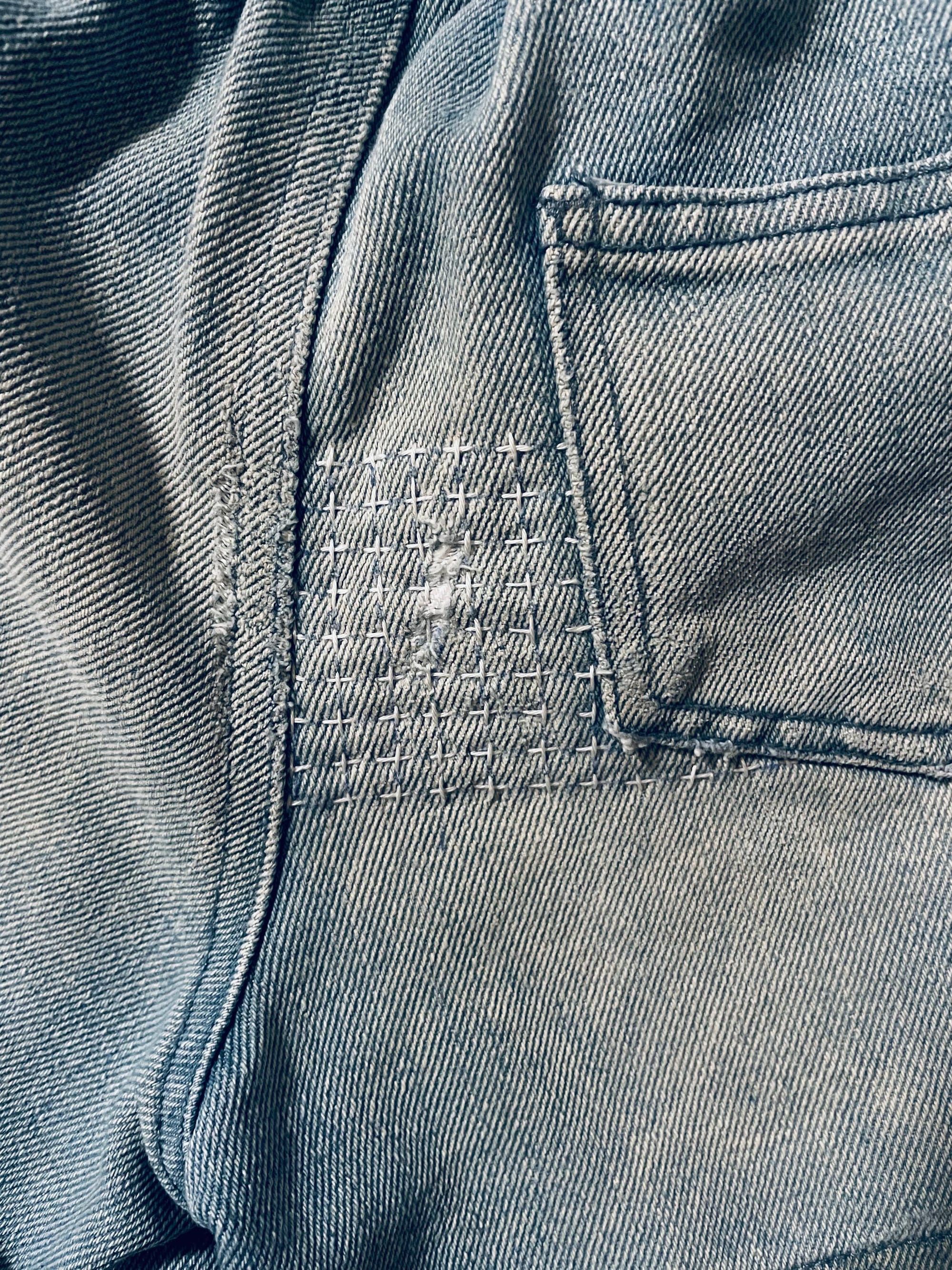
Any pattern will work fine for mending, especially if you use a patch in addition to sashiko stitches.
In case you are doing sashiko to reinforce the fabric, keep in mind that more stitches will provide more support. Patterns that use fewer stitches with bigger intervals won't provide as much support.
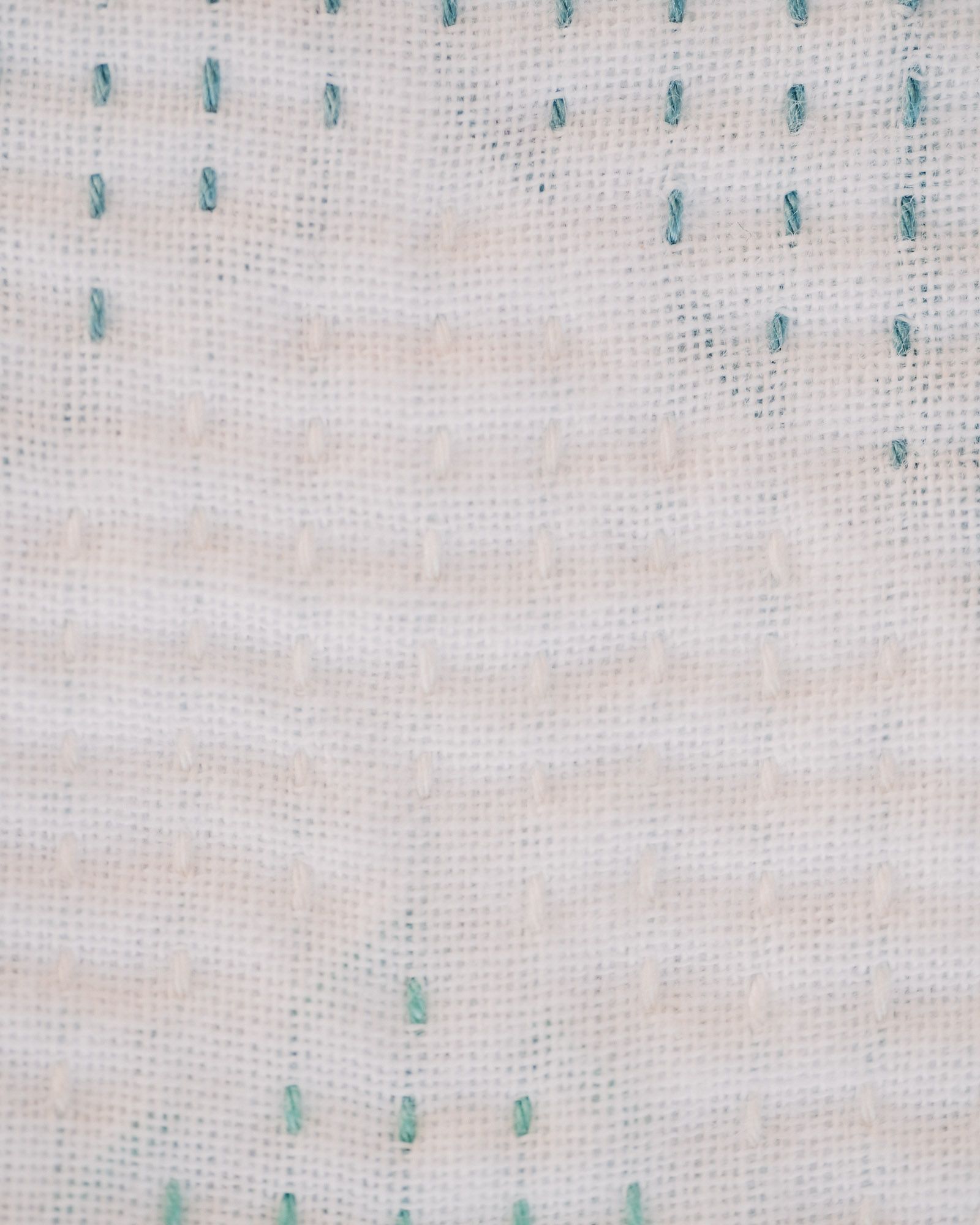
As long as you are working with sashiko thread, even spaced-out stitches reinforce damaged fabric and greatly delay the forming of a hole.
Should you stitch free-hand or draw a pattern?
Unless you are very seasoned, if you want to achieve an even result, I recommend that you draw a pattern or at least a grid on your jeans. Even the most skillful artists usually sew along guiding lines or dots. Personally, I find wobbly lines very enchanting, though.
Drawing a pattern can be done really quickly and I find that if I can stitch along a line, I can stitch that much faster. So instead of taking longer by adding a task to the mending process, I actually end up finishing faster.
But if you can't be bothered and you are happy with visible mending that doesn't quite resemble traditional sashiko, it is totally okay if you improvise.
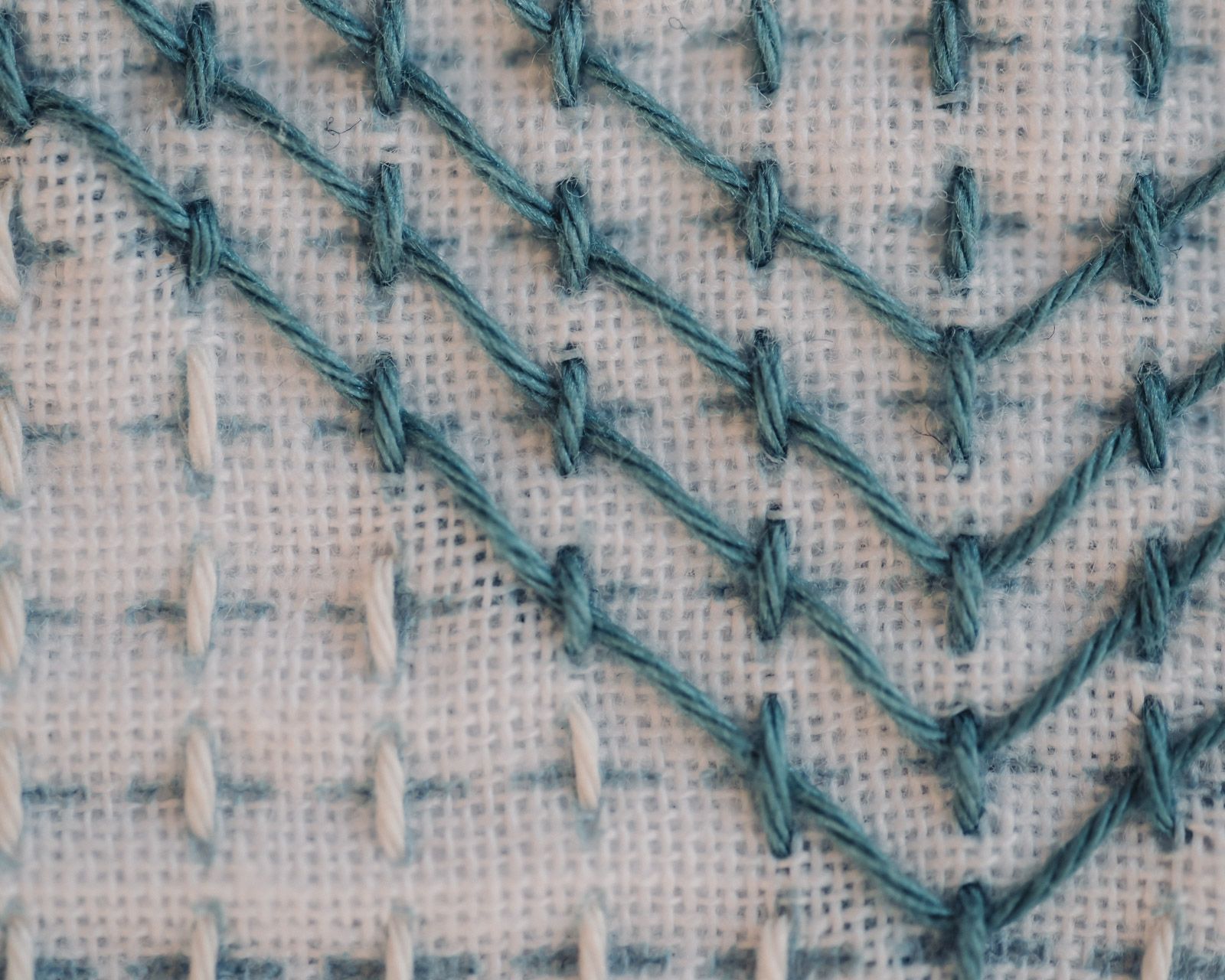
Should you use a patch to mend your jeans with sashiko?
If your jeans already have developed a hole, you need a patch to be able to mend them with sashiko.
The patch can be applied on the outside so that it is fully visible. But you can also attach it to the inside of your garment so that it will only be visible where the hole is. There is no difference in durability, so you are free to decide solely on which look you prefer!
If your jeans are just getting thinner and you want to reinforce the fabric before it develops a hole, you don't have to use a patch. Just reinforcing the fabric with sashiko stitches will work. Just make sure that you use a pattern that provides enough support.
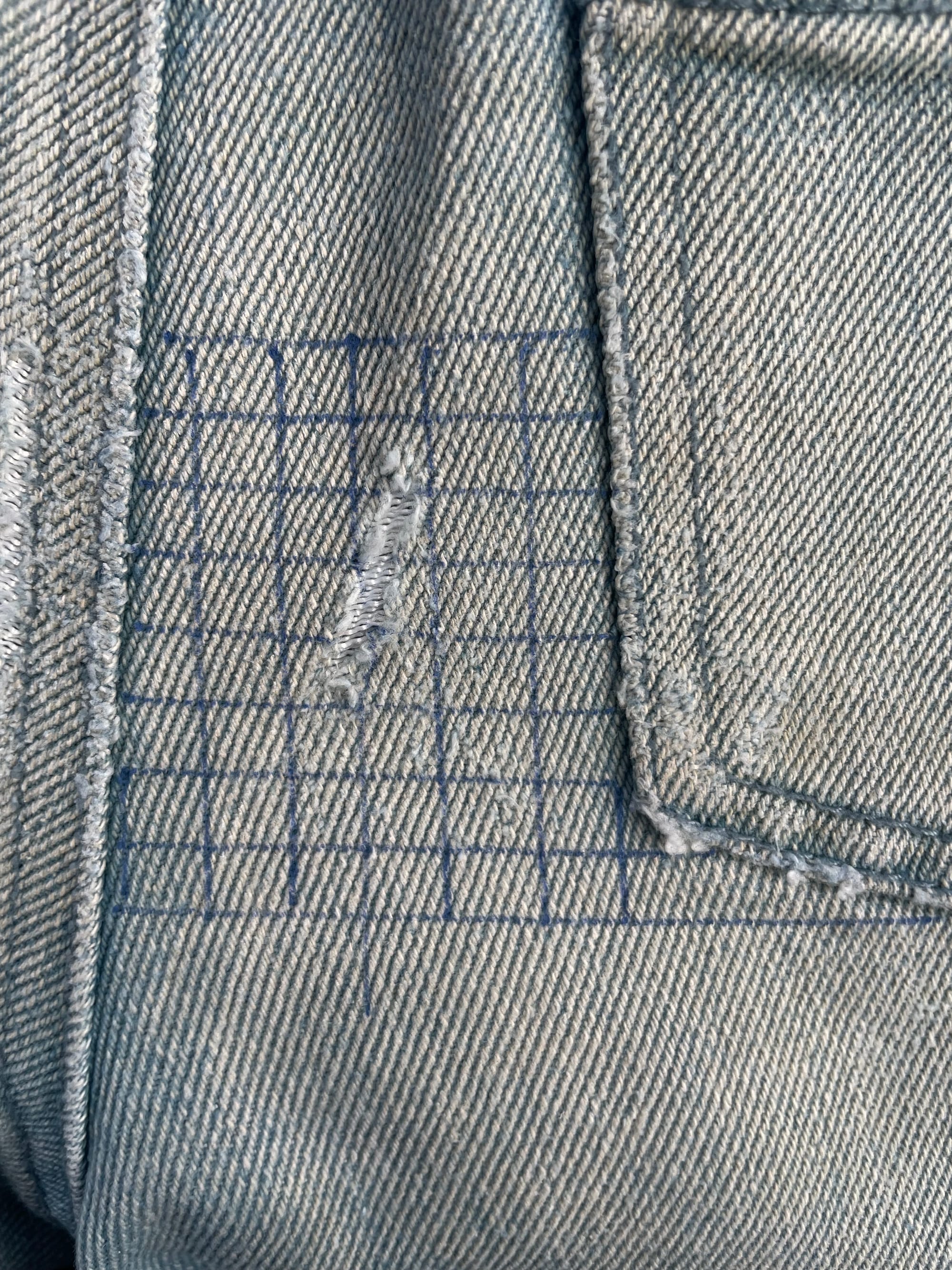
Should you pre-treat your jeans for sashiko?
You don't need to do anything special to prep your jeans for sashiko. But if you do sashiko on a new pair of jeans, the fabric will be pretty stiff and therefore hard to work with.
Do yourself a favor and wear your jeans a couple of times to spare your hands the extra effort. And of course, wash them at least once to get rid of any chemicals and other grime.
If your jeans are not brand new, you don't even need to wash them unless they are very dirty. Actually, it's better if you don't wash them, so they will be stretched in all the right places and they don't lose any comfort when you apply stitches with sashiko thread.
Can you mend pants that are not made of denim with sashiko?
Unless the fabric is extremely delicate, you can likely mend your pants using sashiko. You may need to adjust your needle and/or thread choice.
For very delicate fabrics, it may help to use normal hand-sewing thread and soft fabric to patch a hole. Also, make sure that your needle is thin enough to not damage the fabric or you'll end up with an even more holes instead of a mended piece of clothing.
The same goes for fabric that has a very tight weave. If you find it difficult to push your needle through the fabric, use a slightly thinner needle. If you load fewer stitches, you may get away without breaking your needle.
Can you mend kids' clothing with sashiko?
Yes! You can and you should! Sashiko is one of the most durable ways to patch up a hole. If needed, you can repeat it over and over and it is comfortable no matter how many times you mend a hole.
On top of that, it looks great! My daughters are always thrilled when I patch their clothes with sashiko. Even though usually they are all about cute ribbons and princesses.
I don't know how to start!
Just start. You can't go very wrong and you'll get better with every mend you do. You can look up "visible mending" online if you need some ideas.
If you prefer paper, I recommend this book by Arounna Khounnoraj. I've been following her work for ages and adore pretty much everything she makes. She doesn't use sashiko specifically, but if you love sashiko, you'll probably love her style.
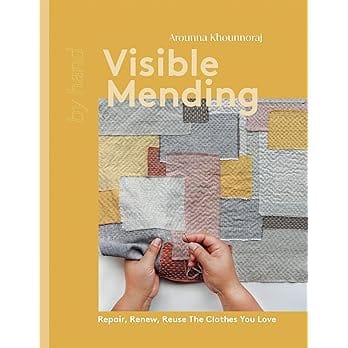
Visible Mending by Arounna Khounnoraj
Beautiful pictures and great instructions!
Conclusion
If you are thinking about mending your jeans, I definitely encourage you to do so using sashiko thread. Any handmade stitches on damaged –or even non-damaged– clothing will add a personal touch and turn it into a one-of-a-kind piece.
If you love sashiko as much as I do, you may find yourself wishing for some wear and tear to work on.
In that case, don't damage your denims on purpose, instead make a hanafukin to add a little love to your kitchen or wherever.
